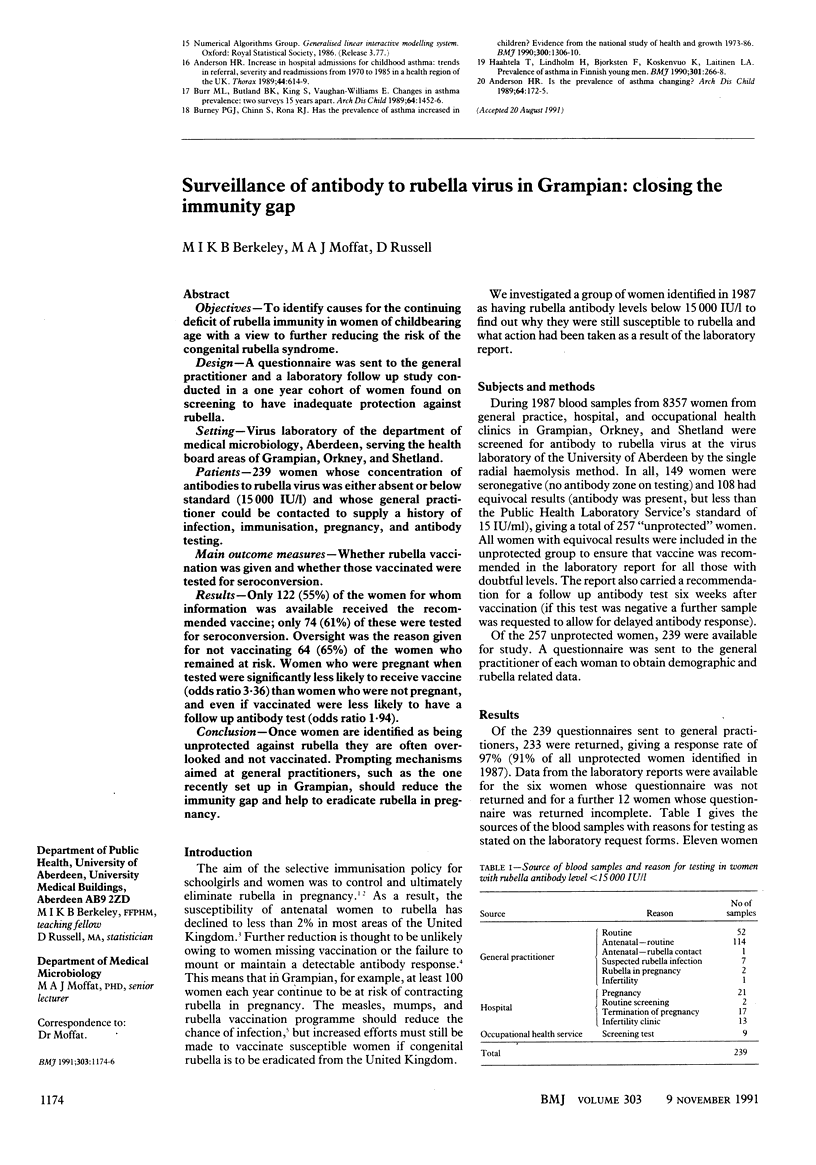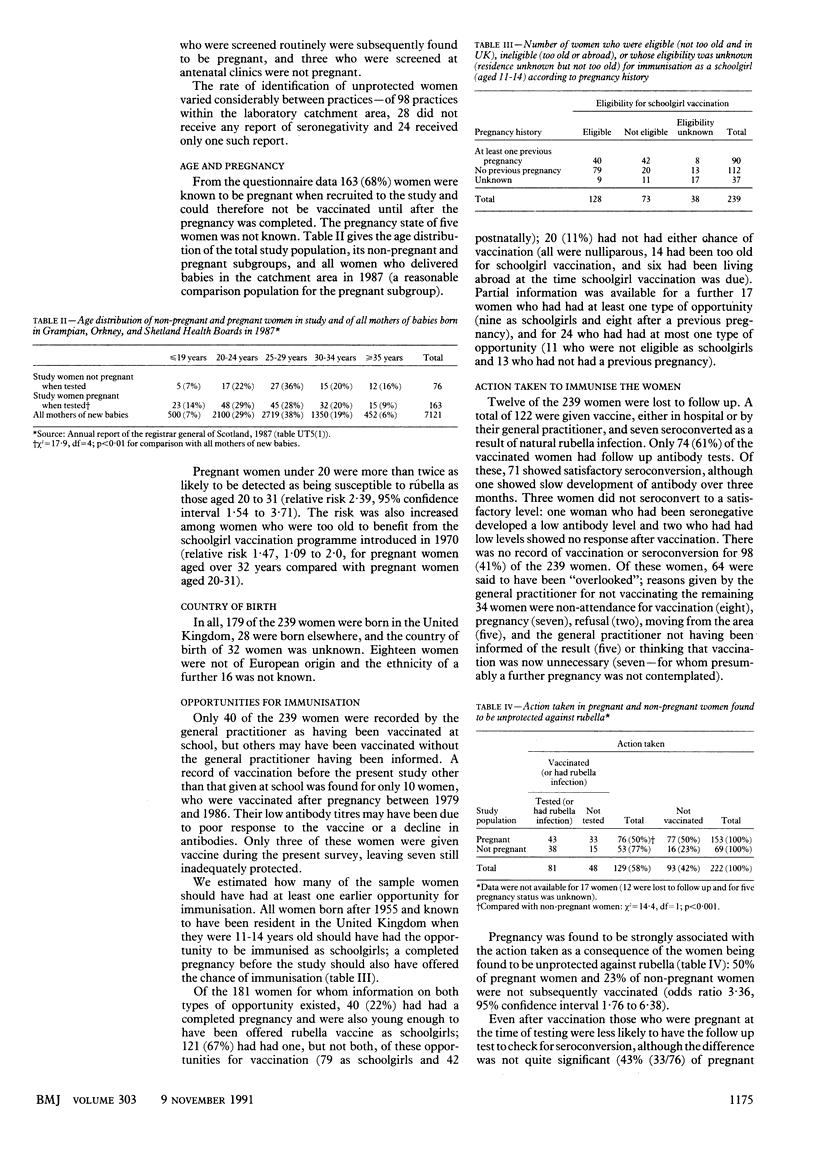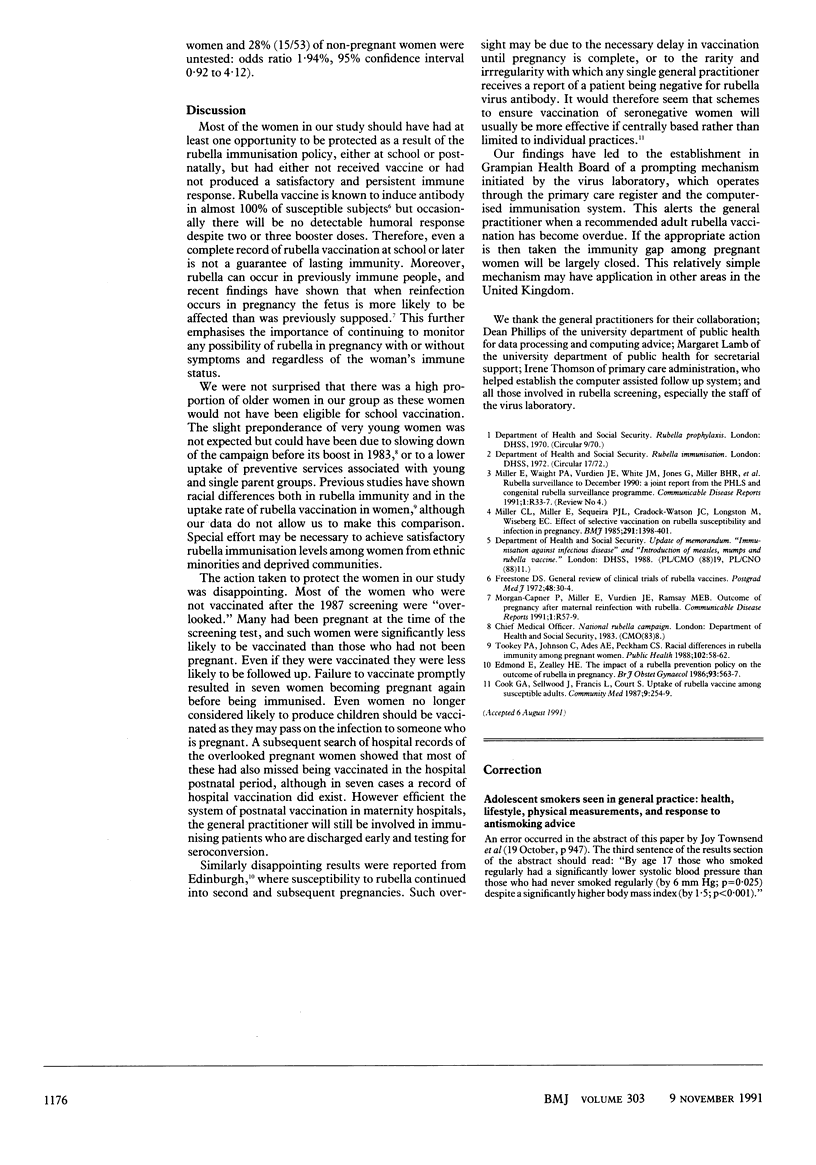Abstract
OBJECTIVES--To identify causes for the continuing deficit of rubella immunity in women of childbearing age with a view to further reducing the risk of the congenital rubella syndrome. DESIGN--A questionnaire was sent to the general practitioner and a laboratory follow up study conducted in a one year cohort of women found on screening to have inadequate protection against rubella. SETTING--Virus laboratory of the department of medical microbiology, Aberdeen, serving the health board areas of Grampian, Orkney, and Shetland. PATIENTS--239 women whose concentration of antibodies to rubella virus was either absent or below standard (15,000 IU/l) and whose general practitioner could be contacted to supply a history of infection, immunisation, pregnancy, and antibody testing. MAIN OUTCOME MEASURES--Whether rubella vaccination was given and whether those vaccinated were tested for seroconversion. RESULTS--Only 122 (55%) of the women for whom information was available received the recommended vaccine; only 74 (61%) of these were tested for seroconversion. Oversight was the reason given for not vaccinating 64 (65%) of the women who remained at risk. Women who were pregnant when tested were significantly less likely to receive vaccine (odds ratio 3.36) than women who were not pregnant, and even if vaccinated were less likely to have a follow up antibody test (odds ratio 1.94). CONCLUSION--Once women are identified as being unprotected against rubella they are often overlooked and not vaccinated. Prompting mechanisms aimed at general practitioners, such as the one recently set up in Grampian, should reduce the immunity gap and help to eradicate rubella in pregnancy.
Full text
PDF


Selected References
These references are in PubMed. This may not be the complete list of references from this article.
- Cook G. A., Sellwood J., Francis L., Court S. Uptake of rubella vaccine among susceptible adults. Community Med. 1987 Aug;9(3):254–259. doi: 10.1093/oxfordjournals.pubmed.a043935. [DOI] [PubMed] [Google Scholar]
- Edmond E., Zealley H. The impact of a rubella prevention policy on the outcome of rubella in pregnancy. Br J Obstet Gynaecol. 1986 Jun;93(6):563–567. doi: 10.1111/j.1471-0528.1986.tb07954.x. [DOI] [PubMed] [Google Scholar]
- Miller C. L., Miller E., Sequeira P. J., Cradock-Watson J. E., Longson M., Wiseberg E. C. Effect of selective vaccination on rubella susceptibility and infection in pregnancy. Br Med J (Clin Res Ed) 1985 Nov 16;291(6506):1398–1401. doi: 10.1136/bmj.291.6506.1398. [DOI] [PMC free article] [PubMed] [Google Scholar]
- Tookey P. A., Johnson C., Ades A. E., Peckham C. S. Racial differences in rubella immunity among pregnant women. Public Health. 1988 Jan;102(1):57–62. doi: 10.1016/s0033-3506(88)80010-6. [DOI] [PubMed] [Google Scholar]


